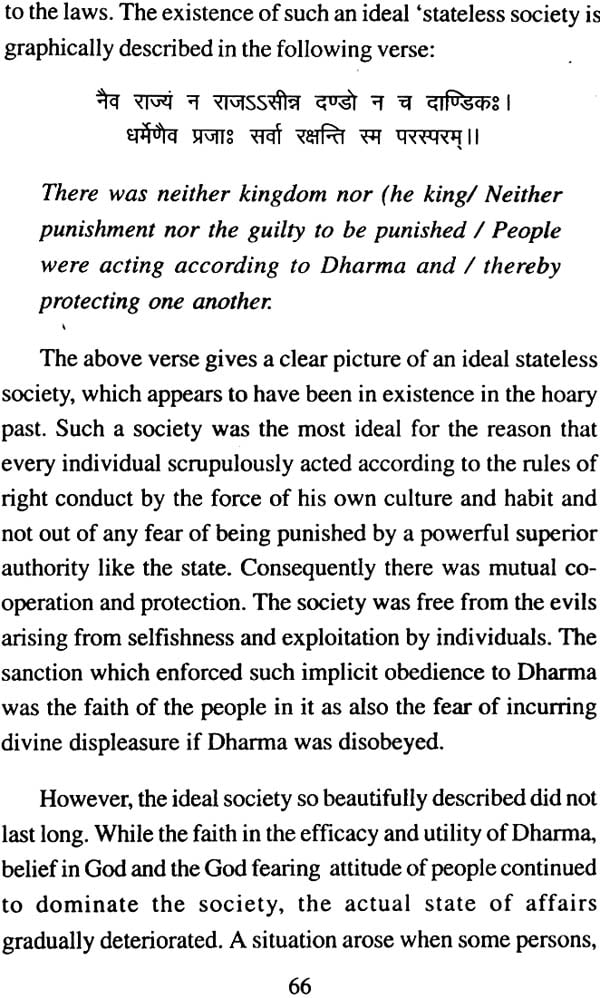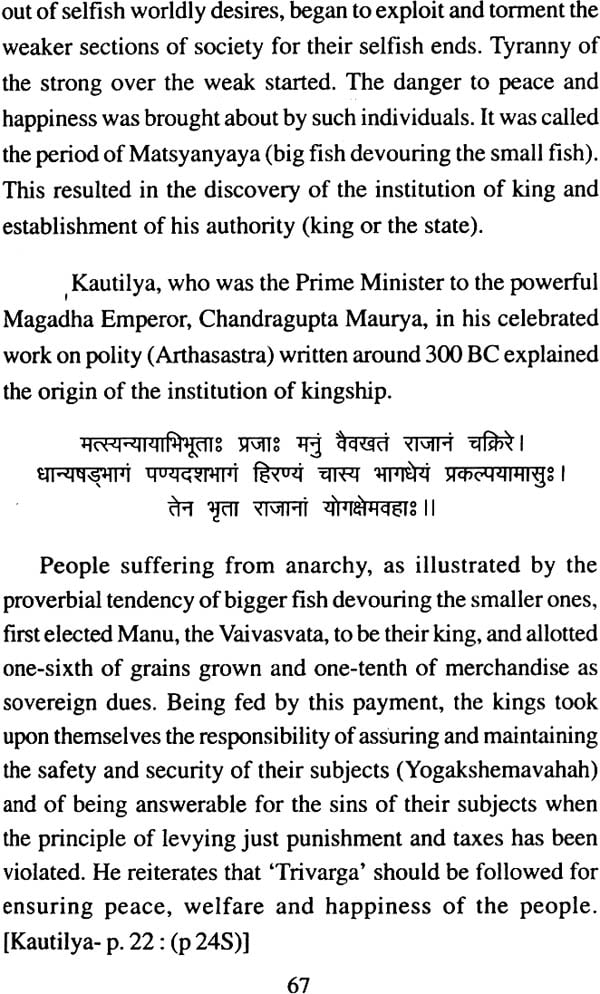
Trivarga Siddhanta (Dharma, Artha and Kama)
Book Specification
| Item Code: | NAJ855 |
| Author: | M. Rama Jois |
| Publisher: | Bharatiya Vidya Bhavan |
| Language: | Sanskrit Text with English Translation |
| Edition: | 2004 |
| Pages: | 156 |
| Cover: | Paperback |
| Other Details | 8.5 inch X 5.5 inch |
| Weight | 260 gm |
Book Description
The book basically deals with philosophy of Hinduism which consists of four main objectives that can be achieved only in HUMAN LIFE and none other. On the basic of the study of ancient spiritual thoughts, the author has made an honest endeavour to briefly explain the contents of these objectives and how to achieve them. < Human life is a priceless gift of God and has a divine purpose. It should not be wasted in mundane pursuits. This is a must read for all sensible persons who are striving to know the true purpose of their existence on earth.
The author, J.M. Mehta, has been devoting much of his time in reading and writing. He has a deep interest in spirituality in general, and in ancient Indian philosophy in particular. In spite of his advanced age and health problems, he is engaged in the regular study of scriptures relating of Hinduism.
Having built up a treasure house of thoughts, writing on related topics has become a mission of his remaining life. The style of his writing is simple and concise.
PUSTAK MAHAL has already published two of his books, The wisdom of the Gita and Essence of Maharishi Patanjali’s Ashtang Yoga both of which are worth reading.
Human life is unique and offers us great opportunities to attain the highest goals of life. It has the capacity and the essential equipment, which no other living creature has. That is why only in human life, the highest achievement is possible and not I any other form. However, it is indeed a pity that most human beings remain ignorant about the real purpose of their existence and hence, spend most valuable span of their lives in mundane pursuits.
An individual is born, enters childhood, grows up, get old and finally dies. During the short span of life available to us, we all eat, drink, sleep, perform activities required of us and try to be happy, as long as we live, and then die. This seems to be a sad but inevitable climax of life. Between birth and death, there is a strange mix of pleasure and sometimes, there is more pleasure and sometimes, there is more pain. In human existence, in general, there is no absolute pleasure or absolute pain; wherever there is pleasure, there is pain, as well. The great English writer, Thomas Hardy remarked that life is a general drama of pain, or suffering punctuated by an occasional episode of happiness, here and there. We all want to be free form pain and misery of life, but either do not have the necessary knowledge to attain that freedom or do not make the requisite effort to work for it.
What is the way out then?
It is our good fortune, that our spiritual leaders called guru, risbis teachers by virtue of their great spiritual effort or sadhna had discovered the means to achieve the above mentioned goal. In order to do that, they had laid down and standardised FOUR OBJECTIVES of life. These objectives are indeed very difficult, but not impossible. And they form the basis of Hinduism. First of all, human beings are required to equip themselves with moral values which would govern all the aspect of life—material and spiritual. These objectives have to be achieved through four human life. These four stages of life called Ashrams include the preparatory stage, the main dominant period of household, the retired life and the last remaining period of seclusion. The ancient Indian philosophy envisages a definite plan of action where the material and the spiritual aspects of life coalesce harmoniously for the ultimate fulfillment.
This small book, primarily deals with the above-mentioned four objectives of life and allied tropics. An attempt has been made to briefly explain them, in an easy manner, to enable a general reader to understand these fundamentals of human life and consequently, to live life in a useful and desirable manner.
| Preface | 7 | |
| 1 | Human Life | 11 |
| 2 | Four Objectives of Human Life | 16 |
| 3 | Dharma(True Religion) | 20 |
| The Current Religius Scenario | 37 | |
| 4 | Artha (Wealth) | 41 |
| Role of Material Wealth | 45 | |
| 5 | Kama (Fulfilment of Desires) | 53 |
| 6 | Moksha | 60 |
| 7 | Means to Achieve Moksha | 64 |
| 8 | Four Stages of Human Life (Ashram Set-Up) | 69 |
| 9 | Role of Ashram Setin the Present Time | 81 |
| 10 | Some Helpful Aids | 83 |
| Good Health | 83 |








